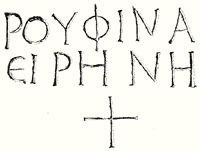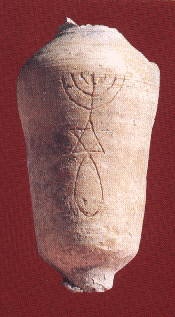- Dec 21, 2012
- 6,777
- 781
- Country
- United States
- Faith
- Oneness
- Marital Status
- Private
- Politics
- US-Others
The Mark Of Forgiveness.
The mark of forgiveness was a single charcoal line placed upon the forehead; it was given by the priest to let the people know that the person had been forgiven.
The pole Moses made to hang the serpent was not a cross either, it was a single pole. The charcoal mark is symbolic of that pole Moses made. Christ was hung on a single pole, not a cross.
Ezekiel 9:4
and said to him, “Go throughout the city of Jerusalem and put a mark on the foreheads of those who grieve and lament over all the detestable things that are done in it.”
Ezekiel 9:6
Slaughter the old men, the young men and women, the mothers and children, but do not touch anyone who has the mark. Begin at my sanctuary.” So they began with the old men who were in front of the temple.
The word for mark is Tau, the last letter of the Hebrew alphabet.
This is the Hebrew word for cross: לַחֲצוֹת
The mark of forgiveness was a single charcoal line placed upon the forehead; it was given by the priest to let the people know that the person had been forgiven.
The pole Moses made to hang the serpent was not a cross either, it was a single pole. The charcoal mark is symbolic of that pole Moses made. Christ was hung on a single pole, not a cross.
Ezekiel 9:4
and said to him, “Go throughout the city of Jerusalem and put a mark on the foreheads of those who grieve and lament over all the detestable things that are done in it.”
Ezekiel 9:6
Slaughter the old men, the young men and women, the mothers and children, but do not touch anyone who has the mark. Begin at my sanctuary.” So they began with the old men who were in front of the temple.
The word for mark is Tau, the last letter of the Hebrew alphabet.
This is the Hebrew word for cross: לַחֲצוֹת


